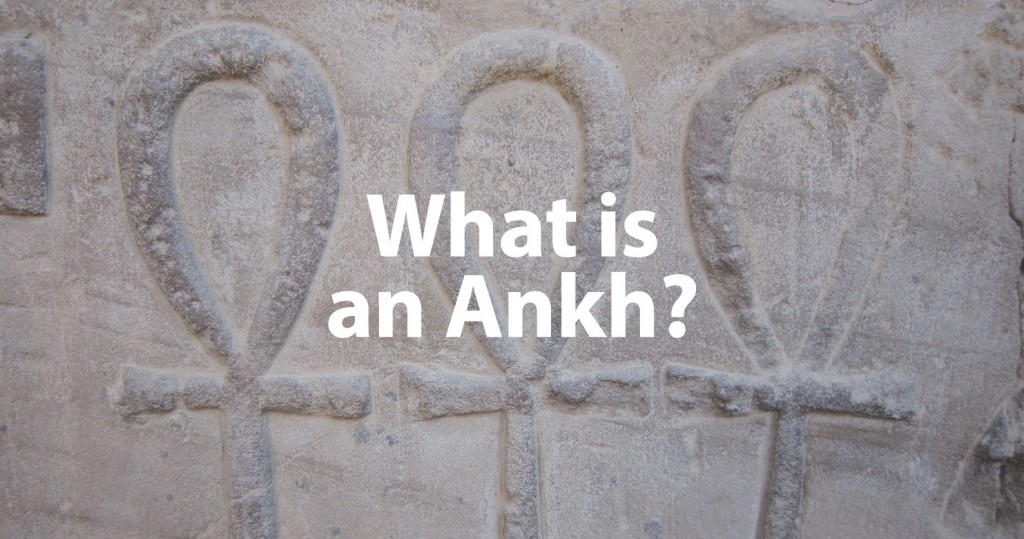
The ankh symbol has been around for thousands of years. It has been depicted by artists and historians amongst more than one religion and its acceptance across cultures is only growing. But why is this symbol held so highly in regard? What is the ankh symbol? Historians, with Egyptologists included have researched the ankh meaning for decades now and in this article we will cover everything you need to know and this ancient hieroglyphic.
What is an ankh cross? (AKA key of life or Egyptian Cross)
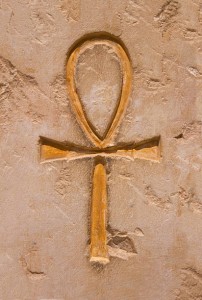 The Ankh Cross is an Egyptian hieroglyph that is typically a simple cross with a loop at the top. The symbol was mostly used in writing and art as a method of symbolizing life, the breath of life, or eternal life, the sun and fertility. The Ankh was also referred to as the key of life and was often depicted in art being held by the loop by gods. It is said it would act as a key to the gateway between the living and the dead, opening to allow souls through in the afterlife.
The Ankh Cross is an Egyptian hieroglyph that is typically a simple cross with a loop at the top. The symbol was mostly used in writing and art as a method of symbolizing life, the breath of life, or eternal life, the sun and fertility. The Ankh was also referred to as the key of life and was often depicted in art being held by the loop by gods. It is said it would act as a key to the gateway between the living and the dead, opening to allow souls through in the afterlife.
History of the ankh
Even though the Origin on the Ankh symbol is still uncertain to this day because the sign is similar to the sign for a “sandal strap” although with later investigation Egyptologists were able to decipher the sign to mean “life”. It is is said to date back to the early Dynastic Period (c. 3150 – 2613 BCE) which was the beginning of the Egyptian era. It was when North and South Egypt were united under one government. The ankh symbol has been passed down since then and has become more common among other religions and cultures around the world.
Ankh symbol meaning/definition
The Ankh has more than one definition as it is celebrated by more than one religion or culture. Firstly, “nh'” is the Egyptian word which means life. This word is represented by the hieroglyphic, the Ankh symbol. It is also known as the crux ansata, or the Egyptian cross, as mentioned above. Crux ansata is a Latin word which translates to “cross with handle”.
What does the ankh symbolize and represent?
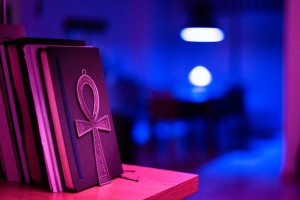 The Ankh is a popular symbol which is widely recognized around the world and shared across cultures as a powerful emblem. For the Egyptians, it was a symbol which represents life, the after life and eternity. Egyptian gods as well as ancient African kings were depicted holding the ankh sign, usually in front of their eyes which would symbolize the breath of life. were It also symbolized the union between a man and a woman with the loop representing the female womb and the cross representing male organs. Some say the horizontal line of the cross is a representation of men and women creating life. The early Christians of Egypt held the Ankh in high regard for symbolizing Christ’s promise of eternal life with him in Heaven.
The Ankh is a popular symbol which is widely recognized around the world and shared across cultures as a powerful emblem. For the Egyptians, it was a symbol which represents life, the after life and eternity. Egyptian gods as well as ancient African kings were depicted holding the ankh sign, usually in front of their eyes which would symbolize the breath of life. were It also symbolized the union between a man and a woman with the loop representing the female womb and the cross representing male organs. Some say the horizontal line of the cross is a representation of men and women creating life. The early Christians of Egypt held the Ankh in high regard for symbolizing Christ’s promise of eternal life with him in Heaven.
In modern or neopagan religions it is used to symbolize one’s honor in the ancient Egyptian spiritual practices or their ties to Africa within their heritage.
Ankh meaning ancient Egypt & modern Egypt
There are a multitude of meanings for the ancient Egyptian hieroglyphic. One of which, as mentioned above is the symbol of life, or the after life as they believed their human life was only a part of an eternal life which did not end after their death. Another is that the circle at the top is a symbol which has no beginning or end, representing the celestial world or the sun god, Ra, and the horizontal line of the cross is the horizon. This links us to yet another symbolization of the union of two entities namely the spiritual and physical realm or male and Female energies meeting. The circle of the ankh also serves as the handle of the key of life, or the key of the Nile, which rests against earth’s horizon at sunrise and sunset. The key also opens the doors into the after life, or realm of the dead, or the entrance to the tomb of deceased kings where one would place an ankh symbol on their forehead, between their eyes. 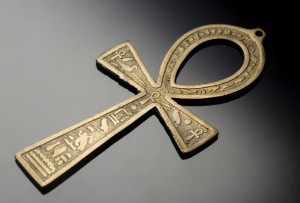 The Ankh’s circle at the top is also said to tie everything in life together in the middle where the circle aligns with the cross. This is referred to as the knot of Isis. Isis is one part of a trio of Egyptian gods, namely Osiris, Horus and of course, Isis – the god of love and life. People of Egyptian culture use the Ankh symbol as an amulet and in this case it would represent life, not the after life. These amulets carried the traits or virtues of the goddess, Isis, and they would serve as a talisman guiding one through this said eternal life. They would gift these amulets to lost loved ones as a offering to take with them to the after life. The goddess Isis would guide these souls into the world of the dead and then Osiris, who was said to be her husband, would then place an ankh cross over their still lips to revive their soul to live out their eternity in the after life. The Ankh is not to be confused with the “tjet” which is said to be a female symbol and worn on the girdle of Isis. The Tjet symbol is similar to that of the ankh but the arms pf the cross are bent down alongside the long line coming down from the loop. The masculine symbol is called the “djed” and all three of them are often depicted in art and writing together alongside each other.
The Ankh’s circle at the top is also said to tie everything in life together in the middle where the circle aligns with the cross. This is referred to as the knot of Isis. Isis is one part of a trio of Egyptian gods, namely Osiris, Horus and of course, Isis – the god of love and life. People of Egyptian culture use the Ankh symbol as an amulet and in this case it would represent life, not the after life. These amulets carried the traits or virtues of the goddess, Isis, and they would serve as a talisman guiding one through this said eternal life. They would gift these amulets to lost loved ones as a offering to take with them to the after life. The goddess Isis would guide these souls into the world of the dead and then Osiris, who was said to be her husband, would then place an ankh cross over their still lips to revive their soul to live out their eternity in the after life. The Ankh is not to be confused with the “tjet” which is said to be a female symbol and worn on the girdle of Isis. The Tjet symbol is similar to that of the ankh but the arms pf the cross are bent down alongside the long line coming down from the loop. The masculine symbol is called the “djed” and all three of them are often depicted in art and writing together alongside each other.
In Modern Egyptian culture we still see depictions of the Ankh in art and tattoos. It was adopted by an Egyptian neopagan religion called ‘Kemetism’ which came out around the 1970s. This symbol was used to symbolize wisdom or their faithful following of ancient Egyptian religious practices and beliefs.
African ankh meaning (ankh meaning in black culture)
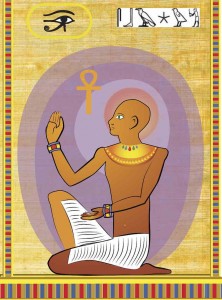 Some say the Ankh symbol originates from ancient Egypt, meaning life. There are those who strongly believe it was actually an Akan word (an African language from Ghana) for the same meaning, life or the creation of life itself. Either way it is still said to represent your spiritual illumination which in turn represents the energy or spirit of God. Central African sages believed and taught their people that their life force” comes from the spirit of God and that the Ankh sign facilitated a purer sense of spirituality and better communication with the divine. This life force forms what we know to be our higher or divine selves. For them, like the Egyptians, the loop of the cross symbolised the after life or eternity which for them was considered the real reality whereas the cross represented everything from the mortal world (the world as we know it) which was considered “illusion matter”.
Some say the Ankh symbol originates from ancient Egypt, meaning life. There are those who strongly believe it was actually an Akan word (an African language from Ghana) for the same meaning, life or the creation of life itself. Either way it is still said to represent your spiritual illumination which in turn represents the energy or spirit of God. Central African sages believed and taught their people that their life force” comes from the spirit of God and that the Ankh sign facilitated a purer sense of spirituality and better communication with the divine. This life force forms what we know to be our higher or divine selves. For them, like the Egyptians, the loop of the cross symbolised the after life or eternity which for them was considered the real reality whereas the cross represented everything from the mortal world (the world as we know it) which was considered “illusion matter”.
It is still celebrated in modern times as a symbol which represents the connection of people of African ethnicity to their ancestral roots in Africa and those religious attributes.
Ankh meaning in Christianity
A branch of Christianity developed in east Africa called the Coptic Church and was one of the first Christian populations in the region. Coptic is the name of the Egyptian language which was originally used as a demonym to distinguish the Christian minority. They persevered as a prominent church making up about 10 to 20% of the population of Egypt.
It is said that Coptic Christians adopted the Ankh sign from Egyptian culture and it became know as the Crux Ansata, or the Egyptian cross, but had a more circular shape at the top than an oval loop like the Egyptian ankh. The sign is similar to that of the Staurogram which is a symbol used by early Christians as a monogram for Christ. It represented the promise of eternal life beside Jesus. Unlike the Egyptians who would create these talismans out of gold or brass.
What is an ankh used for?
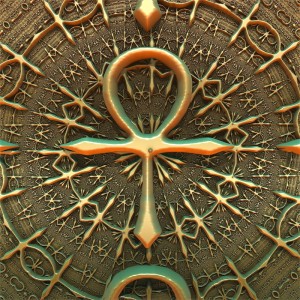 In the Ancient-Egyptian era the Ankh was used as a gift to lost loved ones as a blessing for the after-life and acceptance from the gods to live peacefully in eternity. The Gods, having the power to give life, woul It is also used in Egyptian art and writing. In recent years one will find Ankh symbols carved out of wood, crystal or stone which is said to be better for protecting one’s home as opposed to the metal ones which are best used as personal amulets. That being said, a glass talisman is used for health benefits. The Ankh is also used during meditations to help one connect to one’s spirituality and divine healing energy. To do this will only take about 5 minutes. First, you must make sure you are dressed extremely comfortably without any fabrics weighing you down or irritating your skin, take three deep breaths and imagine a white light around you.
In the Ancient-Egyptian era the Ankh was used as a gift to lost loved ones as a blessing for the after-life and acceptance from the gods to live peacefully in eternity. The Gods, having the power to give life, woul It is also used in Egyptian art and writing. In recent years one will find Ankh symbols carved out of wood, crystal or stone which is said to be better for protecting one’s home as opposed to the metal ones which are best used as personal amulets. That being said, a glass talisman is used for health benefits. The Ankh is also used during meditations to help one connect to one’s spirituality and divine healing energy. To do this will only take about 5 minutes. First, you must make sure you are dressed extremely comfortably without any fabrics weighing you down or irritating your skin, take three deep breaths and imagine a white light around you.
Key takeaways
The Ankh is one of the oldest symbols in existence which is still celebrated and worn with pride. With time being its constant companion bringing out different meanings and representations as spreads across cultures it is not likely that the symbol shall cease to exist any time soon but rather expand its reach to more cultures and religions.
FAQs about ankh (key of life)
Who wears an ankh?
![]() The goddess, Isis, was often depicted wearing the ankh sign on her belt buckle. Only the Gods had the ability to bestow the gift of life whether it was their human life or their life in eternity. Isis and Osiris worked together to guide and awaken souls in the after life using the ankh therefore only the pharaohs of ancient Egypt would wear ankh symbols as amulets because the Gods had bestowed upon him life within a nation.
The goddess, Isis, was often depicted wearing the ankh sign on her belt buckle. Only the Gods had the ability to bestow the gift of life whether it was their human life or their life in eternity. Isis and Osiris worked together to guide and awaken souls in the after life using the ankh therefore only the pharaohs of ancient Egypt would wear ankh symbols as amulets because the Gods had bestowed upon him life within a nation.
What is the power of the ankh?
For ancient Egyptians the ankh has the power to bestow life. the Goddess Isis would use the ankh symbol to guide souls to the after life and her husband, the God Osiris, would place the symbol in their lips to awaken them in the after life. For the Ancient central Africans it was the symbol which granted them a better connection to their spiritual selves or their deity.
What religion does the Ankh represent?
When one refers to “the Ankh” it is in reference to the representation of the Ancient Egyptian religion. Even though it is depicted in the Catholic Church, it is a symbol known to them as the Coptic cross or the Crux Ansata. In modern days the Ankh symbol also represents a neopagan religion called Kemetism.
 Written by:
Written by:
Jade Small





Leave a Reply
You must be logged in to post a comment.